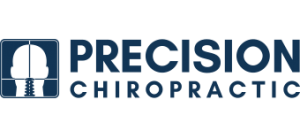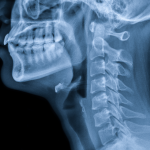My Story of Debilitating Low Back Pain
There is no one out there who has a more intimate firsthand experience than me with low back pain. I had soul crushing back pain for months about 8 years ago.
It was the kind of pain I wouldn’t wish on my worst enemy. I could barely walk. I could barely get out of bed. It was 24/7 unrelenting pain.
How I Injured My Low Back
I was doing really heavy, high rep kettlebell swings when I felt something “pop” in my low back. It wasn’t too painful at the time, but I did feel immediate weakness.
Intellectually, I knew I should have stopped, but I never give up on a workout so like the ultra competitive but not super bright person I am, I finished the workout.
The Aftermath of the Back Injury
Fast forward to the next morning, and I couldn’t move. Getting out of bed was a monumental and excruciating struggle. I couldn’t bend and every step sent a gut wrenching pain into my low back.
It was this way for MONTHS. I went weeks where I could barely tie my shoes or even pick up a weightless plastic chair. I went from lifting hundreds of pounds to not being able to pick up a sock off of the ground.
I was scared my life was over as I knew it. Physical fitness and mobility is a major part of my life. I was worried I would never be able to exercise or work again. As scared as I was, I was also fiercely committed to doing everything in my power to resolve the issue.
This One Thing Made All the Difference in the World
I got massages. I did my own corrective exercises and soft tissue work. And I got traditional chiropractic care. They all helped temporarily over a period of months, but the problem did not seem to go away.
It was not until I added specific, neurostructural chiropractic care into the mix and better corrective exercises and rehab did I really turn a corner and start to improve.
Anatomy of the Low Back
The lumbar spine and pelvis is a complex and dynamic group of structures.
You have the ilium, ischium, and pubis bones that form the pelvis which sits on either side of a triangular base called the sacrum.
Then you have the 5 lumbar vertebrae and discs that make up the lumbar spine (low back).
Then attached to the vertebrae, discs, and pelvis are dozens of different muscles and ligaments that act as primary movers, stabilizers, and slings to allow movement and stability.
You have the muscles on the posterior trunk like the quadratus lumborum, latissimus dorsi, iliocostalis, longissimus, spinalis, rotatores, and multifidi as well as the anterior muscles like the psoas, rectus femoris, iliacus, and the abdominal muscles like the transverse abdominis, internal and external obliques, and rectus abdominis, that all act to stabilize the trunk.
You have a bunch of ligaments that act to stabilize the spine like the ALL, PLL, ligamentum flavum, interspinus, and intertransverse ligaments.
Lastly, you have the bones and discs themselves whose alignment and structural integrity is incredibly important for whole body function and performance.
The Key to Healing Your Low Back
If you really want to heal or if you want to really focus on injury prevention and optimal health, you absolutely cannot neglect your spine and surrounding tissues and structures and expect to stay healthy or recover.
Building a Strong Foundation
First, you must maintain a strong foundation. Similar to the foundation of a house needing to be solid and strong in order for the rest of the house to be healthy, you must have a healthy foundation (spine) in order for the rest of the body to function well.
If the foundation of your house was off, it could lead to cracking of the walls or inability for doors and windows to open and close properly. You would never think about trying to fix the secondary effects of the foundation being off like windows, walls, or doors without first correcting the foundation.
That is number one – correct the alignment of the spine and pelvis.
Building a Bulletproof Spine
Number two is to work on the connective tissue like the muscles, ligaments, and fascia to gain back the optimal sliding surfaces and activation of the muscles.
Third, you must regain the proper movement patterns that allowed this chronic injury to begin in the first place.
If it is an acute injury, we know the joint receptors, muscle receptors, and connective tissue is damaged and must be prepared through proper movement physiology.
Some of the best things you can do to move the trajectory of your life in a healthy direction is to dial in your hydration, get quality sleep, sufficient movement, rehab, and neurostructural chiropractic care.
Making Health Simple
Drinking good, clean water with a pinch of Celtic or Redmond’s salt.
Make sure you get good quality sleep. Your body repairs most when you are in deep sleep.
Move your body in a way that builds stability and promotes healing. Some of the best exercises for the low back are squats, lunges, hip thrusters, front/goblet squats, rows, planks, side planks, bicycle crunches, L-sits, yoga, and any other exercise that is going to stabilize the trunk and strengthen the core and gluts.
Where Do Injuries Come From?
Unless you face a massive traumatic injury, chronic low back pain does not just come out of nowhere. It is usually a slow breakdown over a long period of time.
Please don’t wait until there is damage to try and make the change. By then it might be partially irreversible.
You won’t know unless you get it checked.
Schedule Complimentary Consultation with a Neurostructural Chiropractor.
If you would like a no obligation complimentary consultation, feel free to contact us and we would be more than happy to help.


